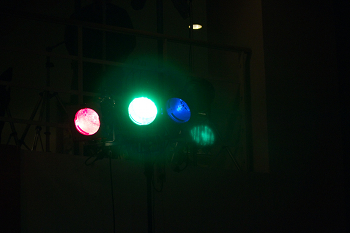Listening Proposal by Czech Radio’s Radiocustica program
1) “Zone” by Eliška Cílková
2) “Vltaraná“ by Alan Courtis
3) „Wind Fusion“ by Jan Trojan & Ivan Boreš
|
Kunstradio presents three recent productions by Czech Radio’s Radiocustica program.
Link: Ars Acustica 1) “Zone” by Eliška Cílková Foto: Eliska Cilkova Artist’s Statement: In recent years, I have repeatedly visited the radioactive area surrounding the former Chernobyl nuclear power plant. This place has always left a strong impression on me. I understand the Chernobyl Zone from a site-specific point of view, because the overgrown buildings and abandoned amusement park present a bizarre sight amidst the surrounding wild nature. The audio composition Zone represents an associative walk through a total of five spaces in the town of Pripyat. At one point, this town was home to some 50,000 people. Because it is located ca. 2km from the power plant, it had to be abandoned forever. Even 27 years later, there is so much radioactivity that you can only spend several hours here at a time, and only with a special permit. Although the town has seen plenty of plundering, it still offers many original sights – after all, it was and basically still is home to thousands of flats, numerous shops, restaurants, a school of visual arts, three indoor pools, a hospital and polyclinic and much more. For this reason, I wanted to capture the city not from the viewpoint of the nuclear disaster, but from the viewpoint of what is there today. And so I have spent several years seeking out the abandoned musical instruments of the Chernobyl Zone in order to visit and record them. Two of them have made it into this composition, although for the purposes of PremEdice I recorded primarily sounds from other spaces. In the composition’s introduction, we enter a concert hall with a rusting grand piano on the stage. It still plays after 27 years, despite the fact that it is missing its top and there is water dripping throughout the place. We then move to another space, to the sound of a Geiger counter whose characteristic beeping provides information on the surrounding radioactivity. The second space that opens before us is an old movie theatre where the water was most apparent. Here it should be mentioned that there is water flowing through many of Pripyat’s buildings even when it is nice outside (for instance because of condensation). The third place I visited was an abandoned preschool. When I entered, I was surprised at how many original items have remained – meticulously arranged children’s toys on the shelves or carnival costumes that have disintegrated only slightly, despite the ravages of time. At the preschool I found a piano and many children’s musical instruments such as xylophones, rattles, and drums, whose sounds form the basis for the entire third part. The fourth audio space I chose was the Pripyat amusement park, where you can find the remains of carousels and swings, overgrown bumper cars, and a majestic Ferris wheel. One interesting thing is that the big wheel never turned, because it was waiting for the May Day festivities. When I came up to it, I shook it so hard that the whole thing started moving. I was actually a little afraid that it might collapse on me, but my yearning for its sound was stronger. The final space is the house of art. Besides some old Vermona synthesizers, it also contained a broken piano without hammers, which someone had removed and put down nearby. I spent a while wondering how it might have sounded if it had the hammers, because it was solidly built and stood in a room with no water or any open windows – it would thus have been protected from the surrounding natural influences. I decided to at least record what had remained of it, because even strings can possess great magic. Not until I got home did I realize that it was a similar discovery as with John Cage’s prepared pianos. At the conclusion of the composition, we hear a brief coda recording my departure from this place. People, who have visited the Chernobyl Zone once, often tend to return. A person changes in this guarded radioactive zone. You become aware of causes and effects, and see the strength of nature and its ability to win and to adapt. One former resident of Pripyat told me that in his desk in his apartment on the third floor of an apartment block on the town square are old childhood photographs that he occasionally goes to see. “Why don’t you take them with you?” I ask him. “Why? Because then there wouldn’t be anything left in Pripyat at all, „he answered. (This conversation formed the main inspiration for my projects related to this region) Links: http://www.pripyatpiano.com http://www.soundsofchernobylzone.com http://www.rozhlas.cz/radiocustica_english/project/_zprava/eliska-cilkova-zone--1273642 2) “Vltaraná“ by Alan Courtis
|

PROGRAM
CALENDAR
CALENDAR
 PLAY EXCERPT
PLAY EXCERPT